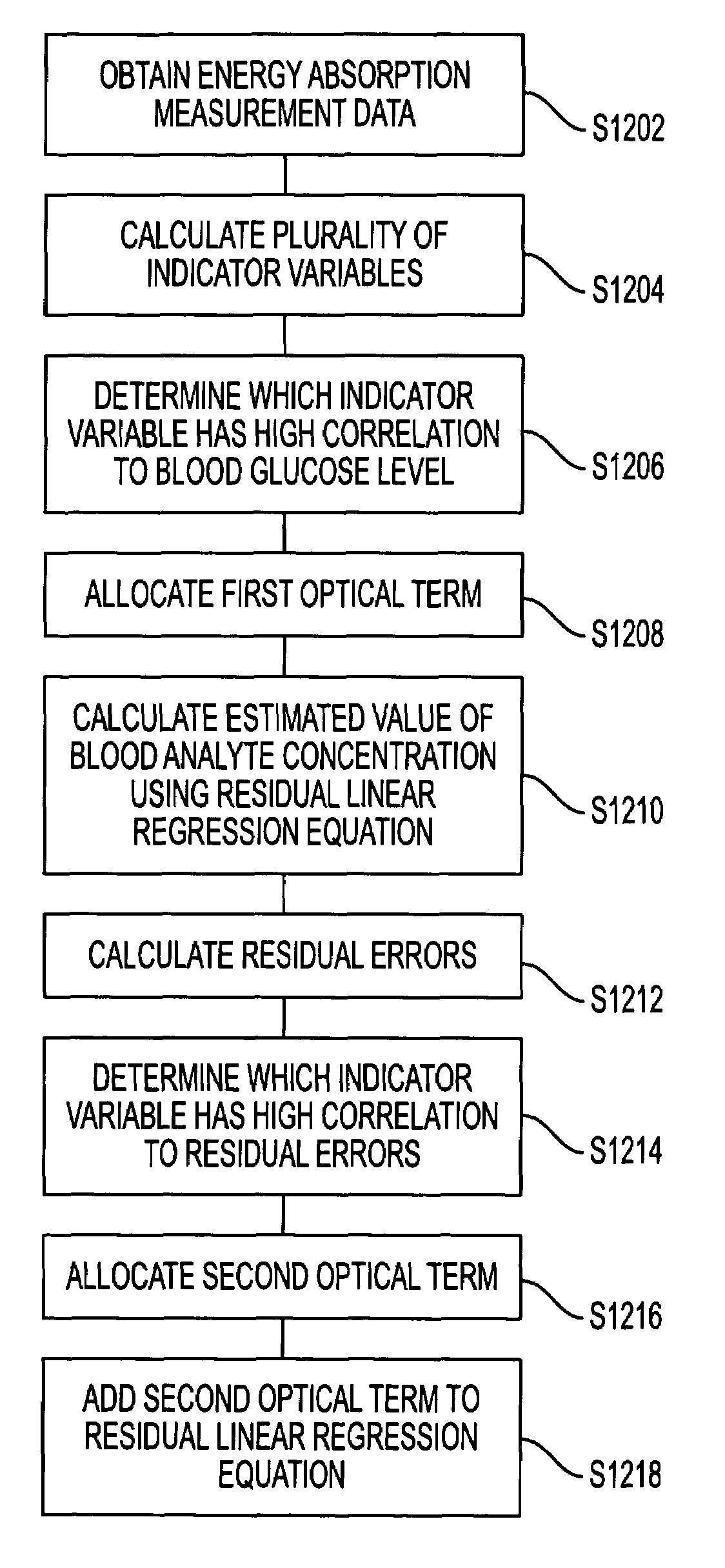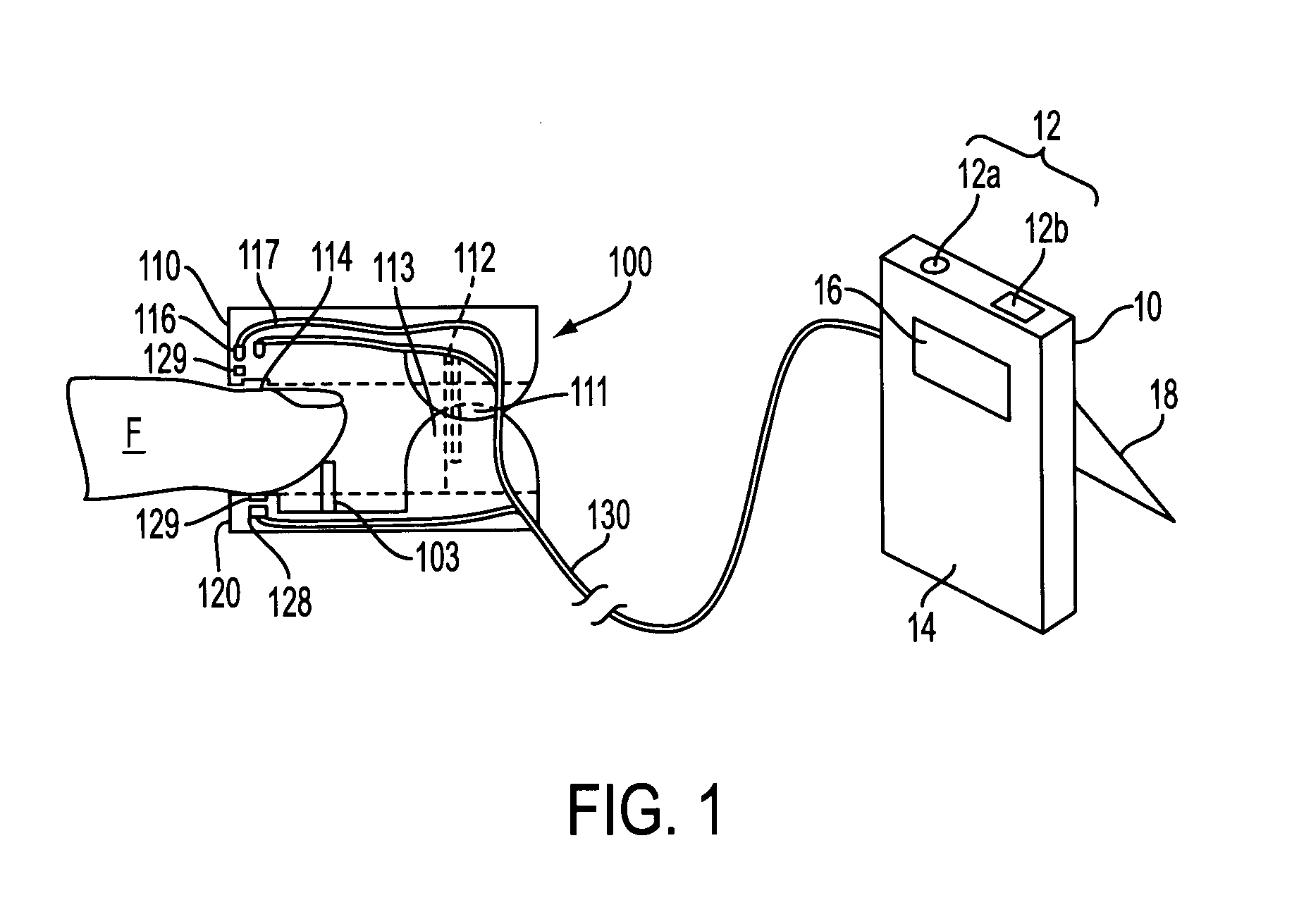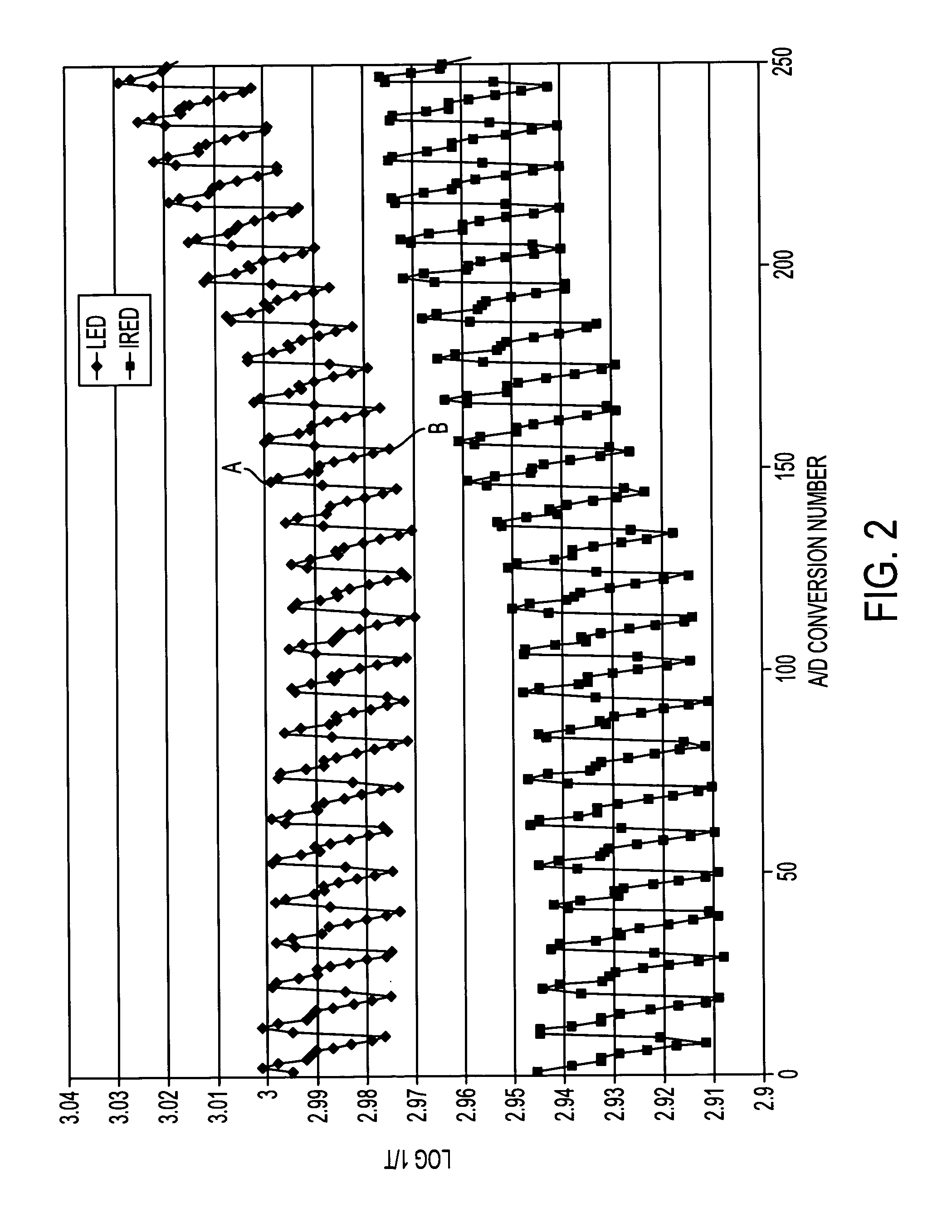Low-cost method and apparatus for non-invasively measuring blood glucose levels
a blood glucose and low-cost technology, applied in the field of low-cost methods and instruments for performing non-invasive blood glucose measurements, can solve the problems of pain and discomfort of making a measurement, high cost of disposable test strips, and invasive and minimally invasive instruments
- Summary
- Abstract
- Description
- Claims
- Application Information
AI Technical Summary
Benefits of technology
Problems solved by technology
Method used
Image
Examples
Embodiment Construction
[0032]In accordance to the present invention, only a single infrared emitting diode (IRED) and a single light emitting diode (LED) (i.e., two wavelengths) are required for non-invasively measuring blood glucose levels. In general, conventional non-invasive instruments for measuring blood glucose levels require multiple IREDs (typically 10–14), each IRED with an expensive narrow band pass optical filter to generate multiple wavelengths for determining blood glucose levels. Such prior non-invasive instruments are large and expensive.
[0033]In an embodiment of the method utilizing a measurement instrument having a single IRED and a single LED, it allows without the need of any expensive optical narrow band pass filters, near-infrared (near-IR) energy and red light energy to be introduced into blood present in a body part of a test subject. The energy emerges from the test subject generally opposite from the IRED and LED. After determining an measurement parameter (or indicator variable)...
PUM
 Login to View More
Login to View More Abstract
Description
Claims
Application Information
 Login to View More
Login to View More - R&D
- Intellectual Property
- Life Sciences
- Materials
- Tech Scout
- Unparalleled Data Quality
- Higher Quality Content
- 60% Fewer Hallucinations
Browse by: Latest US Patents, China's latest patents, Technical Efficacy Thesaurus, Application Domain, Technology Topic, Popular Technical Reports.
© 2025 PatSnap. All rights reserved.Legal|Privacy policy|Modern Slavery Act Transparency Statement|Sitemap|About US| Contact US: help@patsnap.com



